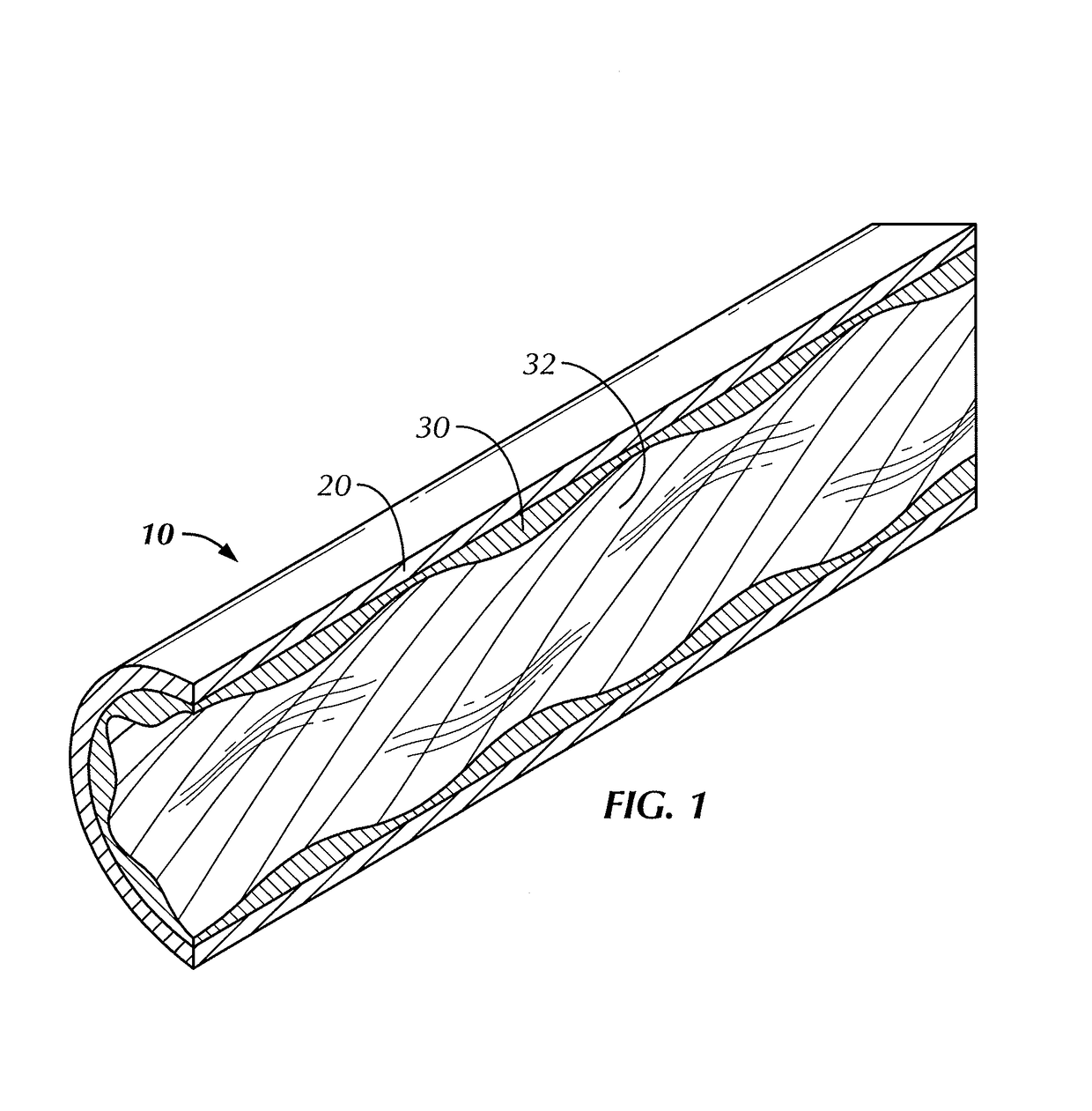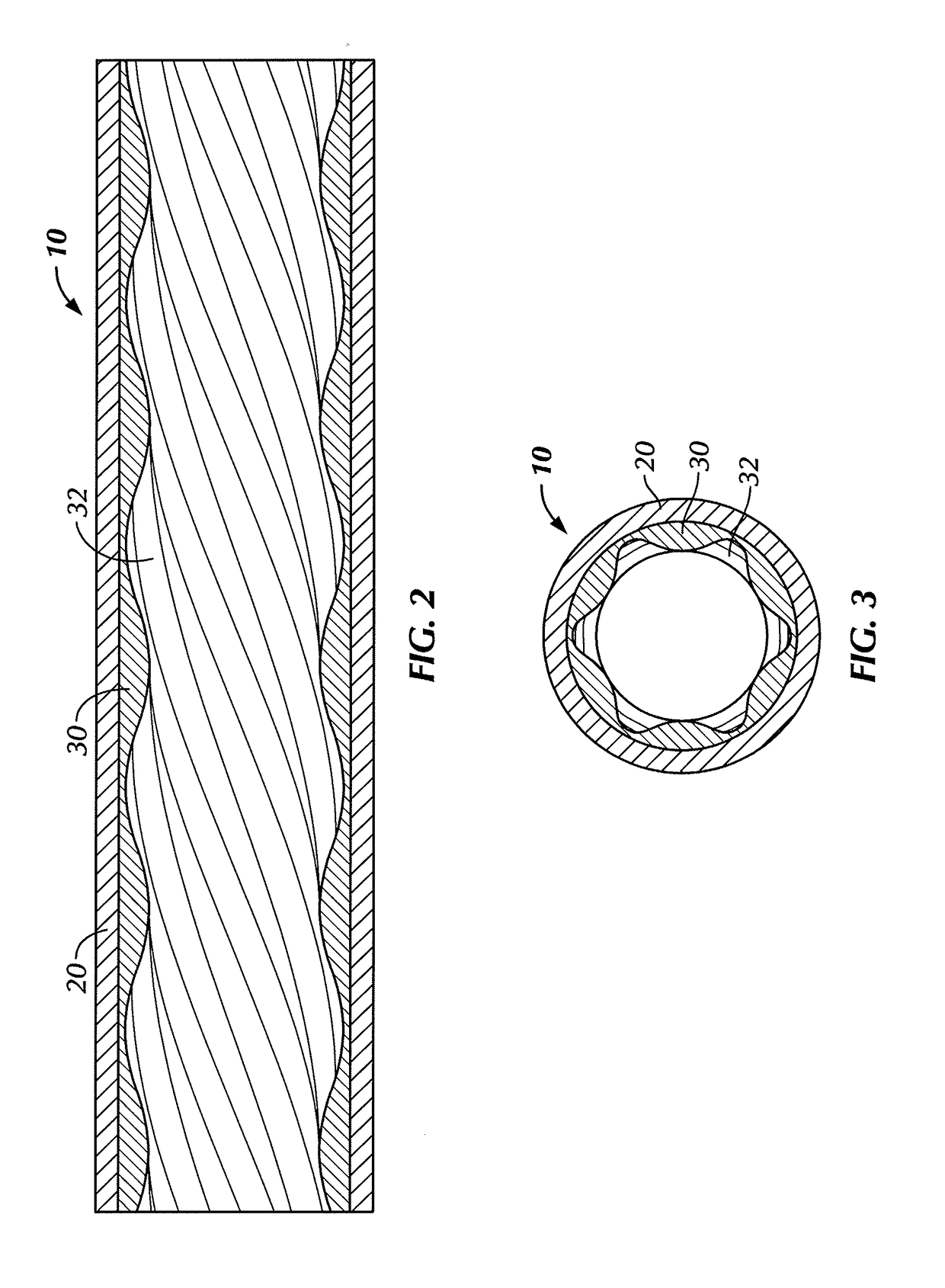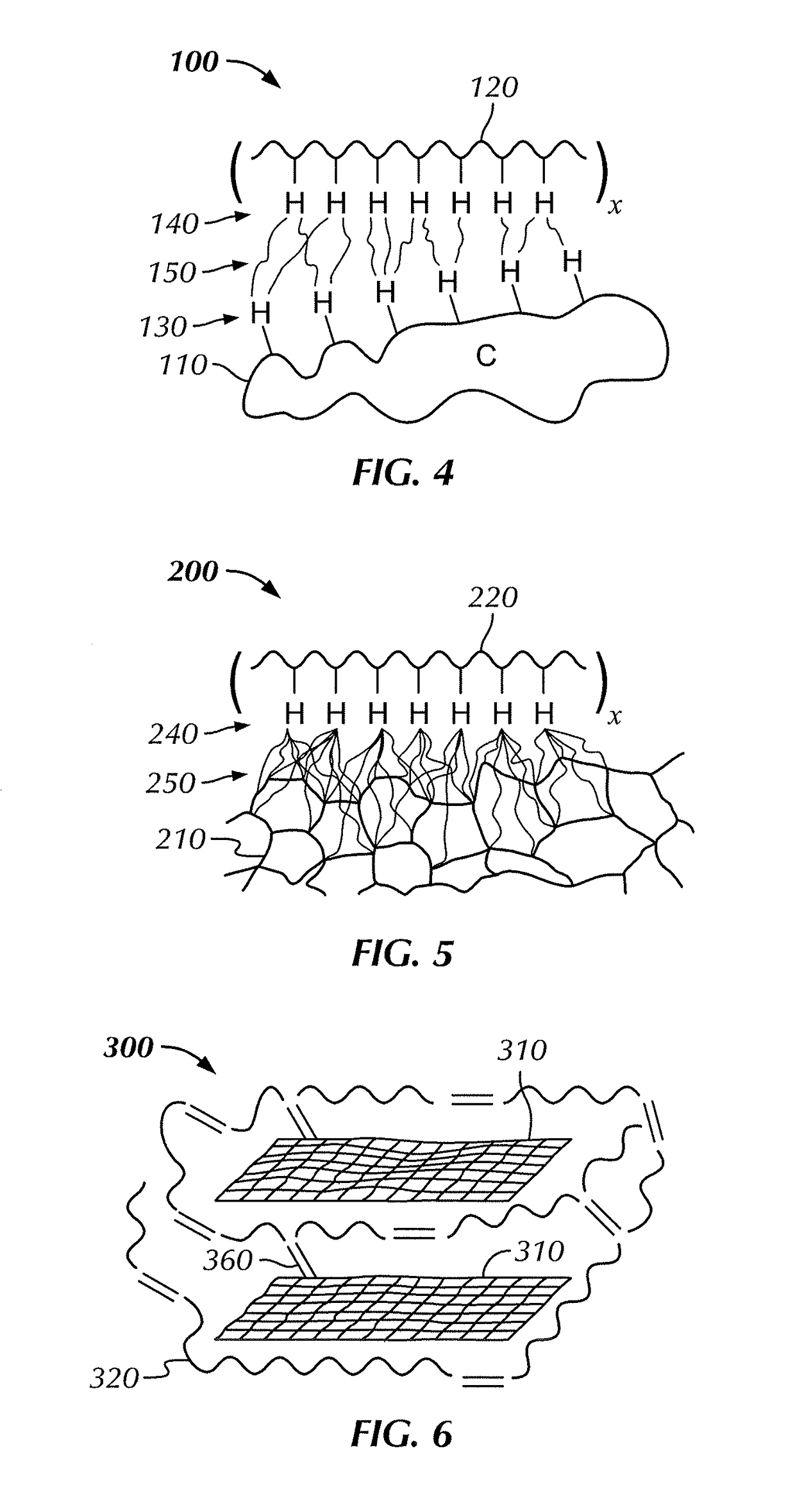Graphene enhanced elastomeric stator
a technology of elastomeric stator and graphene, which is applied in the direction of liquid fuel engines, machines/engines, rotary piston liquid engines, etc., can solve the problems of inability to detect grain boundaries, inability to meet the requirements of elastomeric stator, so as to increase the interaction of polymer and filler, improve the effect of elastomeric stator and structural enhancemen
- Summary
- Abstract
- Description
- Claims
- Application Information
AI Technical Summary
Benefits of technology
Problems solved by technology
Method used
Image
Examples
Embodiment Construction
[0029]Elastomeric stators in progressive cavity motors are often configured with hard metal tubular exterior sleeves and inner elastomeric stator liners that are typically formed by injection molding the liner over a mould mandrel. FIGS. 1-3 depict multiple views of an embodiment of an elastomeric stator assembly 10. Many variations exist regarding the shapes, sizes, and dimensions of elastomeric stators and FIGS. 1-3 merely illustrate an exemplary embodiment of an elastomeric stator assembly as can be configured with any of the various graphene enhanced elastomeric stator compound embodiments described herein or any combination of the multiple embodiments as described herein.
[0030]Referring to FIGS. 1-3, in an embodiment, a graphene enhanced elastomeric stator assembly 10 is shown having a metal outer tubular surface 20 and a graphene enhanced elastomeric stator inner liner 30 that connects to the outer tubular surface 20. The elastomeric stator liner inner walls 32 can be formed i...
PUM
| Property | Measurement | Unit |
|---|---|---|
| thickness | aaaaa | aaaaa |
| Mooney viscosity | aaaaa | aaaaa |
| compressive modulus | aaaaa | aaaaa |
Abstract
Description
Claims
Application Information
 Login to View More
Login to View More - R&D
- Intellectual Property
- Life Sciences
- Materials
- Tech Scout
- Unparalleled Data Quality
- Higher Quality Content
- 60% Fewer Hallucinations
Browse by: Latest US Patents, China's latest patents, Technical Efficacy Thesaurus, Application Domain, Technology Topic, Popular Technical Reports.
© 2025 PatSnap. All rights reserved.Legal|Privacy policy|Modern Slavery Act Transparency Statement|Sitemap|About US| Contact US: help@patsnap.com



